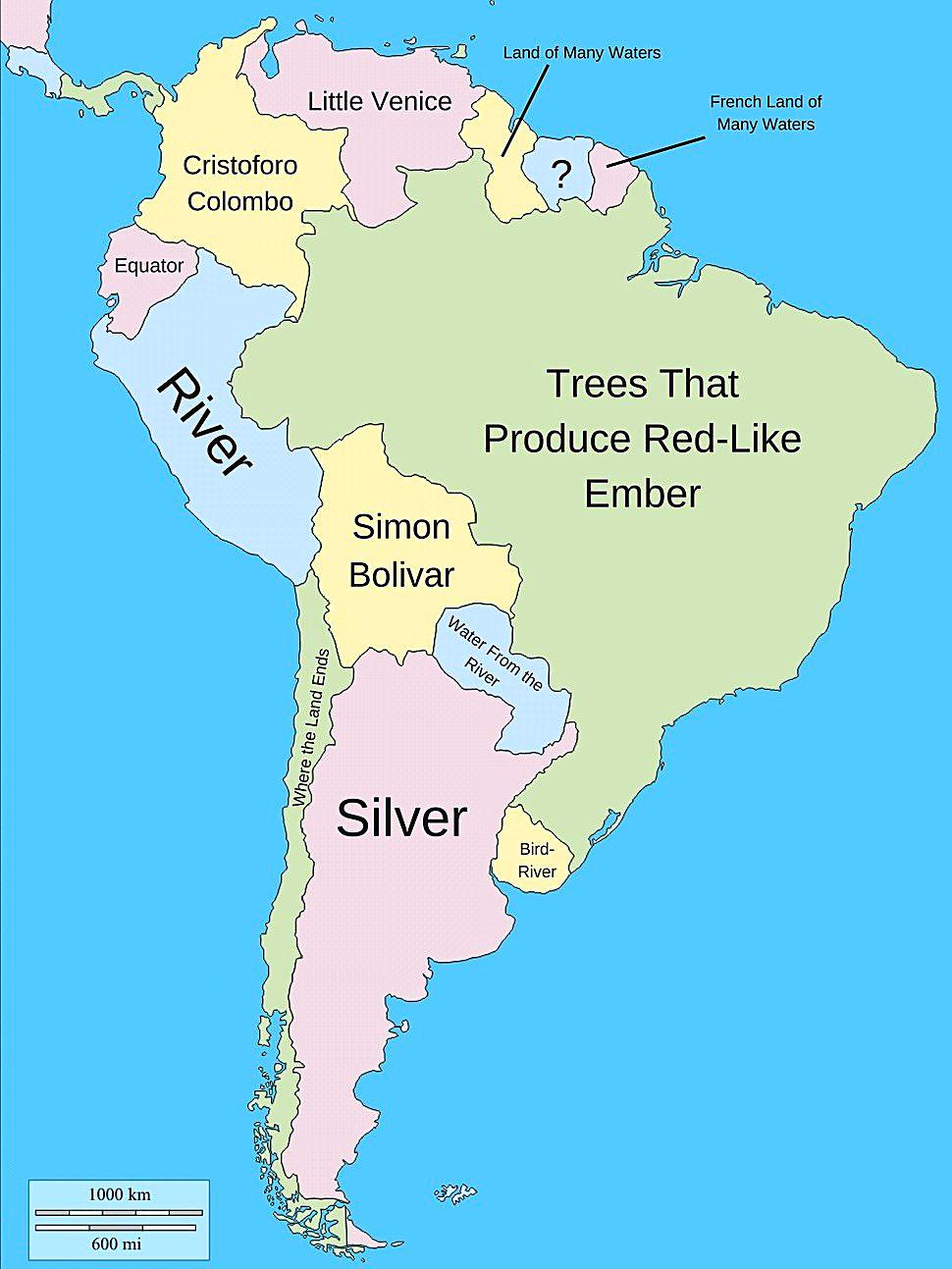Literal Meanings of South American Country Names Map


Marcus Rodriguez
Historical Geography Expert
Marcus Rodriguez specializes in historical cartography and geographic data analysis. With a background in both history and geography, he brings unique...
Geographic Analysis
What This Map Shows
This map provides an intriguing look into the literal meanings of South American country names, revealing a tapestry of linguistic history, cultural significance, and geographical features that have shaped these nations. Each name tells a story, often reflecting indigenous languages, colonial influences, or the physical landscapes of the region. By examining these meanings, we can gain a deeper understanding of the identities and histories of these diverse countries.
Deep Dive into the Literal Meanings of Country Names
The names of South American countries are not just labels; they encapsulate elements of the land, the people, and historical narratives. For instance, the name "Argentina" comes from the Latin word "argentum," meaning silver. This is a nod to the early European explorers who believed that vast deposits of silver lay within the regions of the Río de la Plata. Similarly, "Chile" is thought to derive from the indigenous Mapuche word "chilli," which means "where the land ends," a fitting description for its southernmost territories.
Interestingly, many names are steeped in indigenous languages. Take "Peru," for example. The origins of the name are believed to come from the Quechua word "biru," which refers to a river. This reflects the importance of waterways in defining geographical and cultural boundaries in pre-Columbian societies.
Furthermore, the name "Bolivia" honors Simón Bolívar, a key figure in the continent's struggle for independence. This highlights how names can also embody national pride and historical significance. In contrast, "Paraguay" comes from the Guarani term "Paraguay," which means "river that swallows other rivers," pointing to the country's vast network of rivers that are crucial for its ecosystem and economy.
Every name has its unique background, often intertwining the stories of indigenous populations and European colonization. For example, "Ecuador" translates to "equator" in Spanish, reflecting its geographical position straddling this imaginary line. The name itself serves as a reminder of the environmental diversity found within the country, from the Andes mountains to the Amazon rainforest.
Understanding these meanings allows us to appreciate the rich cultural tapestries that make up South America. Country names serve as both geographical markers and historical texts, providing insights into the past and present of these nations.
Regional Analysis
When we group these countries by region, we can see interesting patterns emerge. In the Andean region, countries like Peru, Bolivia, and Ecuador all have names that connect to indigenous languages, illustrating the deep-rooted influence of pre-Columbian cultures in the highlands. For instance, Bolivia's name reflects its historical legacy, whereas Ecuador's name emphasizes its geographical significance.
In contrast, the names of countries in the southern cone, such as Argentina and Chile, carry more Spanish influence, reflecting the colonial history that shaped their development. Argentina's name evokes thoughts of wealth and prosperity, while Chile's name suggests a final frontier, highlighting the dramatic geography of the region.
Northern countries like Colombia and Venezuela also offer unique insights. Colombia is named after Christopher Columbus, a testament to European exploration's impact, while Venezuela's name—meaning "Little Venice"—is a nod to its coastal cities that reminded explorers of the canals of Venice.
By analyzing these regions, we see not just how names differ, but also how they reflect the interplay of history, culture, and geography across South America. Each country's name tells a part of the story that contributes to the continent's rich diversity.
Significance and Impact
Understanding the literal meanings of South American country names is about more than just etymology; it offers a lens through which we can view historical events, cultural shifts, and geographical realities. In today's globalized world, these names continue to play a role in national identity and pride. They remind us of the complexities of colonial histories and the resilience of indigenous cultures.
As countries evolve and face modern challenges, the significance of their names can influence everything from tourism to international relations. For example, as nations work to reassert their cultural identities, many are revisiting the importance of indigenous languages and history, leading to a resurgence of pride in these names and their meanings.
Moreover, as tourism increases in South America, understanding the rich history behind country names can enhance visitors’ experiences, allowing them to appreciate not just the landscapes but also the stories that these names tell. So, have you noticed how a simple name can encapsulate centuries of history and cultural evolution? Each name on the map is a reminder that there’s much more beneath the surface of a country than meets the eye.
In conclusion, this map is more than a visual representation; it’s a gateway to understanding the intricate relationships between language, culture, and geography in South America. As we delve deeper into these meanings, we can better appreciate the rich narratives that shape this vibrant continent.
Visualization Details
- Published
- October 11, 2025
- Views
- 44
Comments
Loading comments...